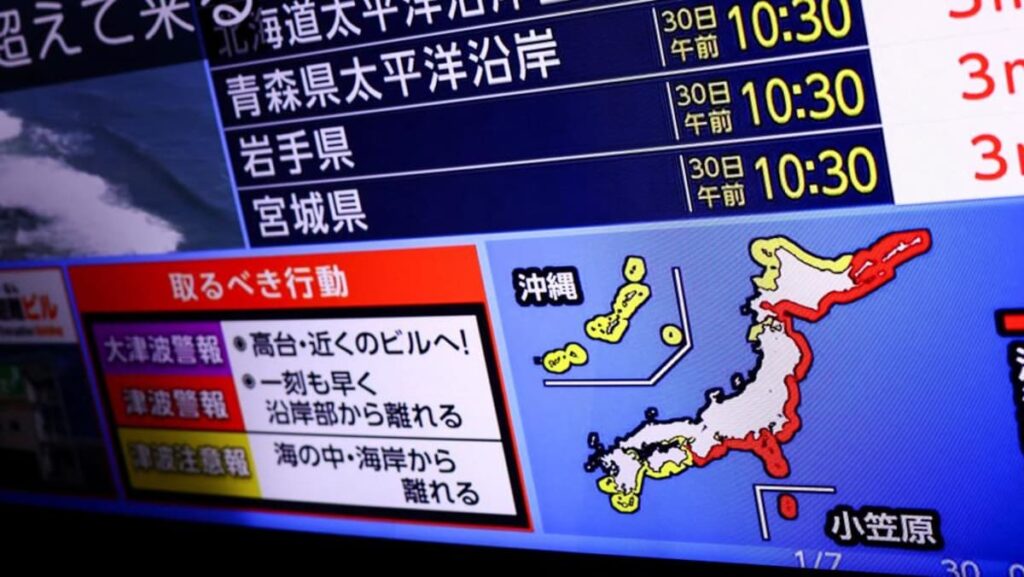The US further sounded the alarm with a series of alerts of varying levels along North America’s West Coast, from Alaska down to the entire coast of California.
Waves less than 30cm above tide levels were observed in the Alaskan communities of Amchitka and Adak, said Dave Snider, tsunami warning coordinator with the National Tsunami Warning Center in Alaska.
The impact of the tsunami could last for hours – such as in Adak, a community of about 70 people in Alaska’s Aleutian Islands – or perhaps more than a day, Snider said.
“A tsunami is not just one wave,” he said. “It’s a series of powerful waves over a long period of time. Tsunamis cross the ocean at hundreds of miles an hour – as fast as a jet airplane – in deep water. But when they get close to the shore, they slow down and start to pile up. And that’s where that inundation problem becomes a little bit more possible there.”
“In this case, because of the Earth basically sending out these huge ripples of water across the ocean, they’re going to be moving back and forth for quite a while,” which is why some communities may feel effects longer, he said.
Tsunami waves of nearly half a metre were observed as far as California, with smaller ones reaching Canada’s province of British Columbia.
“STAY STRONG AND STAY SAFE!” US President Donald Trump said on social media.
WARNINGS ACROSS THE PACIFIC
Over in Asia, the Philippines’ seismology agency advised people to stay away from beaches in coastal areas facing the Pacific Ocean as these regions are expected to experience tsunami waves of less than 1m in height.
“It may not be the largest of waves, but these can continue for hours and expose people swimming in the waters to danger,” Teresito Bacolcol of the Philippine Institute of Volcanology and Seismology told The Associated Press.
Indonesia’s geophysics agency also issued a warning that tsunami waves of less than 0.5m could reach some coastal cities and towns in the Papua region, North Maluku province and Gorontalo province.
Pacific nation Palau, about 800km east of the Philippines, ordered the evacuation of “all areas along the coastline”.
In Taitung in Taiwan, hotel resort worker Wilson Wang, 31, told AFP: “We’ve advised guests to stay safe and not go out, and to avoid going to the coast.”
China’s tsunami warning centre issued an alert for parts of the country’s east coast along Shanghai and Zhejiang provinces. The warning forecasts that waves could reach between 0.3m to 1m.
Shanghai and Zhejiang are already under alert for Typhoon Co-May.
Co-May made landfall in the port city of Zhoushan in Zhejiang province in the early hours of Wednesday with maximum sustained wind speeds near its centre of 23 metres per second.
Forecasters expect Co-May to make another landfall closer to Shanghai later on Wednesday.
China’s National Marine Environmental Forecasting Center said the tsunami was expected to have a “disastrous impact” on some parts of China’s coast, including Shanghai and Zhoushan.
https://www.channelnewsasia.com/east-asia/japan-tsunami-warning-earthquake-hokkaido-russia-hawaii-5266181


